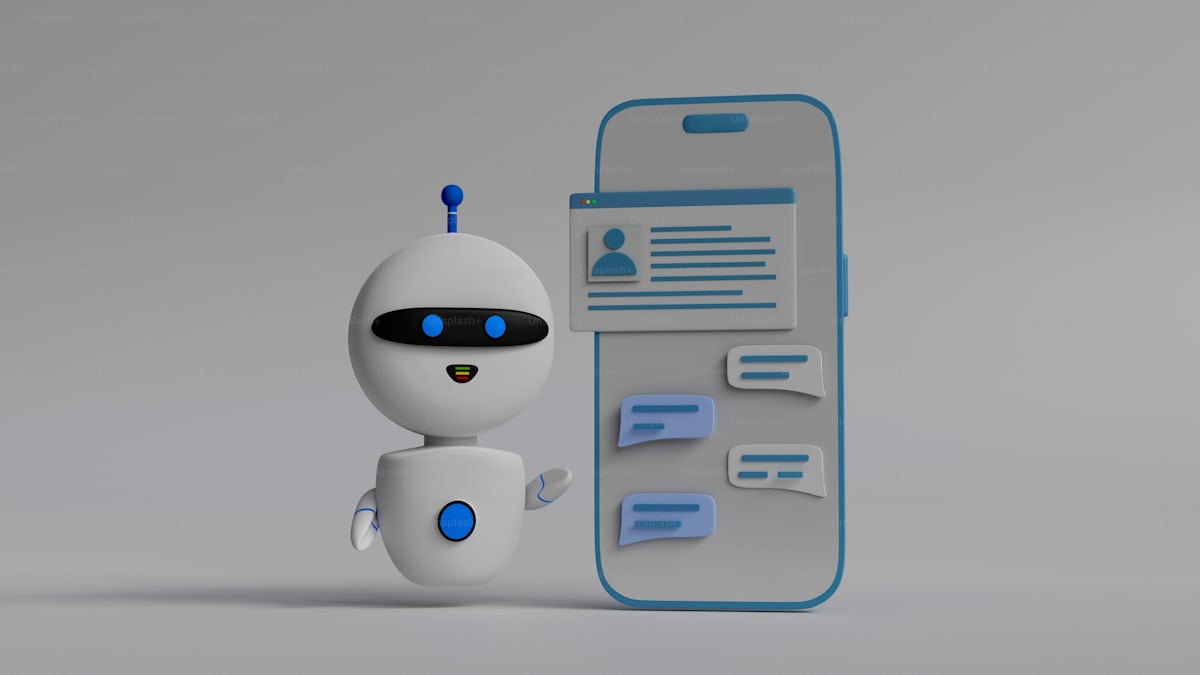Many people have reduced Artificial Intelligence to chatbots. Whenever the word “AI” comes up in conversations, the first thing that comes to mind for most is a little widget that sits at the bottom corner of a website, asking “How can I help you today?” I used to think the same way myself. My earliest exposure to AI was through simple online customer service chat windows that were often more frustrating than helpful. They were rigid, mechanical, and could barely understand what I was asking. To me, that was AI nothing more than an automated question and answer system.
 Source
Source
But as I’ve grown, studied, and interacted more with technology, I’ve realized how limited and shallow that perspective is. AI is not just about chatbots. It’s not just about typing a message and receiving a response. That’s only a tiny fragment of the bigger picture. And sadly, this narrow understanding has stopped many people from seeing the true power and potential of AI.
For example, when people hear that I’m studying or working with AI, they immediately ask, “Oh, like ChatGPT? That question makes me smile, but also frustrates me. Because while chatbots are one of the most popular applications of AI, they’re far from the only one. AI is woven into so many aspects of our daily lives, often in invisible ways that we don’t even recognize.
Think about the last time you opened Google Maps to find your way to a new place. That smooth, real-time navigation, calculating traffic patterns, estimating arrival time, rerouting when there’s an accident, that’s AI. When you’re scrolling on Netflix and see recommendations that match your taste almost perfectly, that’s AI. Even the predictive text on your phone that helps finish your sentences is powered by AI.
The irony is that most people interact with AI every day without knowing it, yet still reduce it to the idea of a chatbot. It’s like looking at electricity and thinking it’s only useful for light bulbs, ignoring the fact that it powers hospitals, factories, transport systems, and entire economies.
On a personal level, what excites me about AI is not just the convenience it brings but the way it changes how we solve problems. I’ve seen AI models used in healthcare to detect diseases earlier than doctors could with the naked eye. I’ve read about farmers using AI-driven tools to predict weather patterns and optimize their harvests. Even in education, students are leveraging AI tutors that adapt to their unique learning styles, something a traditional classroom might not always provide.
The sad part is that when people keep limiting AI to chatbots, they not only misunderstand it but also underestimate its potential. They don’t see how it can reshape industries, empower individuals, and open doors that were once unimaginable. I’ve had conversations with friends who are skeptical of AI because they think it’s “just robots talking back to you.” That mindset blocks curiosity and without curiosity, there’s no innovation.
To me, AI feels personal because it represents possibility. It reminds me of how people once looked at the internet in the 90s. Back then, many thought the internet was just for sending emails or chatting in Yahoo Messenger. Nobody could fully imagine things like social media, cloud computing, online businesses, or remote work. The same is happening with AI now, we’re standing at the edge of something transformative, but too many of us are still stuck in the “chatbot” stage of imagination.
That’s why I believe it’s important to change the conversation. When I talk about AI with others, I try to show them a bigger picture. Yes, ChatGPT and chatbots are impressive, but AI is also the invisible engine behind so many innovations that touch our lives every day. It’s in self-driving cars, fraud detection systems in banks, translation tools breaking language barriers, and even in art and music creation.
Personally, AI challenges me to think differently about my own potential. If machines can learn and adapt, then as humans, what excuse do we have not to? It pushes me to be more creative, more curious, and more open to change. That’s why I can’t limit AI to just chatbots. Doing that would be like living in a house but only ever sitting in the hallway you’d miss the kitchen, the bedrooms, the living room, the garden, you’d miss the full experience.
In conclusion, AI is much more than chatbots. While chatbots are the face of AI for many, they are only one small doorway into a vast house of possibilities. The real challenge is for us to expand our vision, to see AI as a tool that can revolutionize health, education, business, and even personal creativity. I’ve learned to see AI not just as an assistant that chats with me, but as a partner in innovation and I believe that if more people embraced that perspective, we’d be less afraid and more excited about the future.
Posted Using INLEO